Architectural historian Charles Wemyss, author of Noble Houses of Scotland, sheds light on Scotland’s castles and stately homes, sharing the most fascinating stories of these buildings.
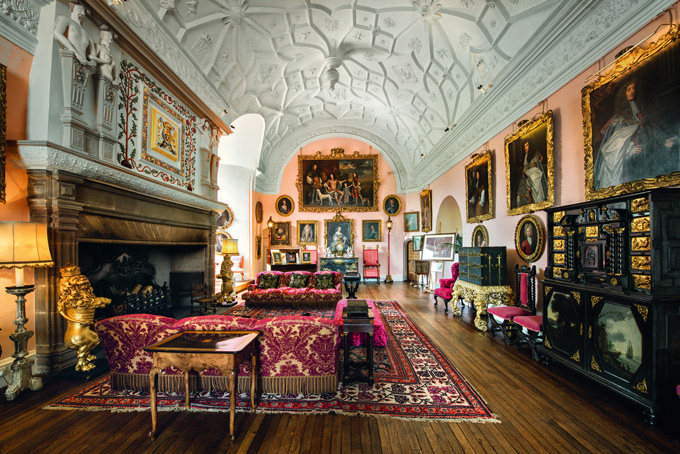
A new book called Noble Houses of Scotland, by architectural historian Charles Wemyss, younger brother of the 27th Laird of Wemyss, explores the wealth of Scottish castles and stately homes as well as the intensive work that has transformed them into the glorified buildings we see today.
Read on for some of the most remarkable stories associated with some of the buildings featured in the book.
Glamis Castle, Angus
Behind the grand façade of his imposing historic castle hides much intrigue and darkness. In 1034 AD King Malcolm II was murdered at Glamis, which at the time was the site of a royal hunting lodge, and in 1540 Lady Janet Douglas, widow of Lord Glamis, was burned at the stake for being a witch on the orders of King James V. The castle was also the setting for Shakespeare’s Macbeth. But perhaps the most famous legend connected with the castle is that of the Monster of Glamis; a wild rumour that a child born to the residing family in the 19th century with deformities was hidden away from the world. The singer and composer Virginia Gabriel, who stayed at the castle in 1870, wrote accounts of a ‘monster’ kept in the castle. According to Gabriel the ‘monster’ was kept here right up until his death, after which his rooms were bricked up. Another ‘monster’ is supposed to have dwelt in Loch Calder, near the castle.
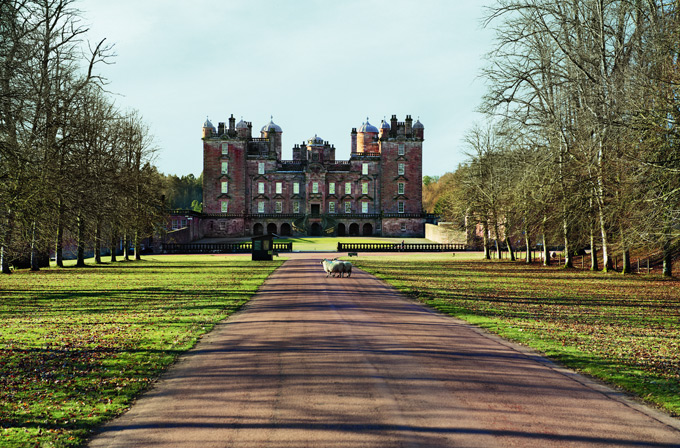
Drumlanrig Castle, Dumfries & Galloway
Dubbed the ‘Pink Palace’ of Drumlanrig for its distinctive pink sandstone exterior, Drumlanrig Castle was constructed between 1679 and 1689, a prime example of late 17th century Renaissance architecture. The castle is home to part of the Buccleuch art collection, which includes masterpieces by both Rembrandt and Leonardo da Vinci, no less. Though Da Vinci’s Madonna of the Yarnwinder was stolen from the castle in 2003, it was returned in 2007 after being found in Glasgow.
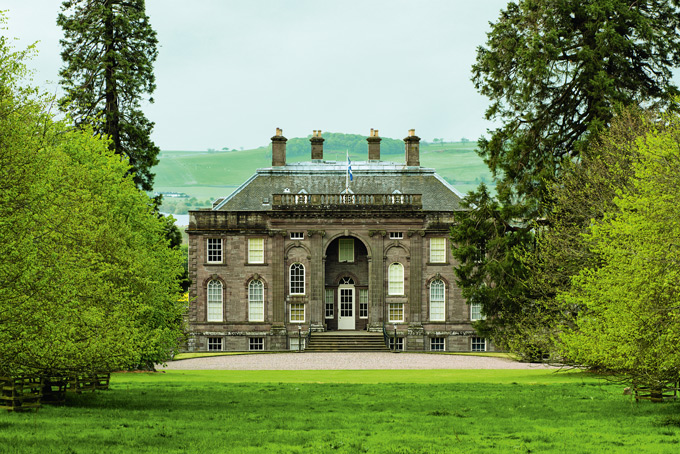
House of Dun, Angus
The handsome House of Dun is an early 18th-century Georgian masterpiece overlooking the Montrose Basin nature reserve, with 300 hectares of sensational manicured gardens, parkland and woodland within its estate. It was designed by prolific 18th-century Scottish architect William Adam and inspired by the Château d’Issy near Paris, though it bears few hallmarks of an ancestral seat, despite having being owned by David Erskine, the 13th Laird of Dun. Instead it incorporates symbols of support for the Jacobites, such as a triumphant arch in the centrepiece of the façade – a nod to Erskine’s loyalty as patron to the Earl of Mar, an exiled Jacobite.
Wemyss Castle, Fife
Probably best known as the location where Mary Queen of Scots met with her future husband Lord Darnley in 1565, Wemyss Castle sits on Scotland’s craggy coastline with a view out over the Firth of Forth. Some believe it possesses, as with many Scottish Castles, a ghost known as the ‘Green Lady’. In Scotland green is considered an unlucky colour and has long been associated with death and misfortune. The ‘Ghost of Wemyss’ is a young woman who supposedly floats along the corridors trailing her dress of rustling green silk.
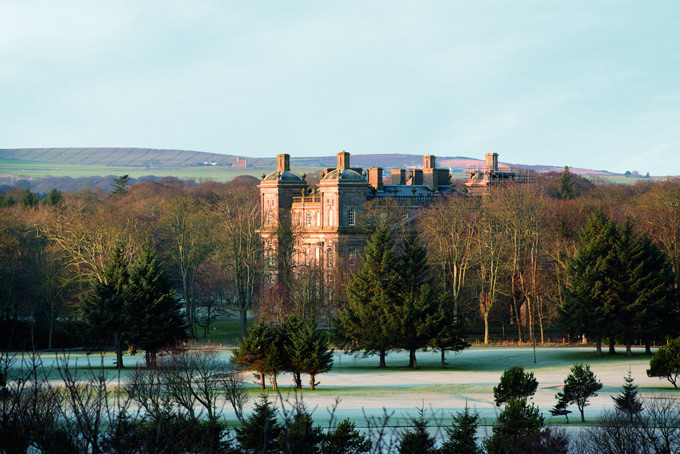
Duff House, Moray
Containing a collection of important works from the National Galleries of Scotland, Duff House was also designed by architect William Adam. Though actually a Georgian property, it was deliberately built to look older than its years. To find out why, read our full feature.
Culzean Castle, Ayrshire
Culzean’s spectacular Oval Staircase is just one of the many attractions at this country estate. The former home of the Marquess of Ailsa, the chief of Clan Kennedy, but gifted to the National Trust for Scotland in 1945, it was the second most visited National Trust property in Scotland in 2013, and it is such an icon that it also features on Scottish banknotes.
Buy the Noble Houses of Scotland by Charles Wemyss
Read about more of Britain’s castles and palaces
Related articlesScotland’s stately homes |
Click here to subscribe! |
Download BRITAIN Magazine to your mobile today

 No mobile device? Purchase directly on Zinio for your desktop!
No mobile device? Purchase directly on Zinio for your desktop!

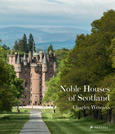




 © 2024
© 2024